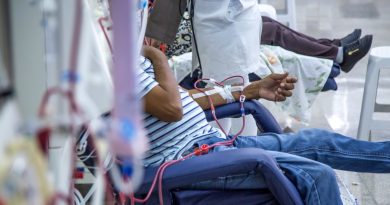Compromise: If you are Congress, it’s what you do
Some believe the Affordable Care Act (ACA) is destined for failure and that rising prices in the individual market indicate it has entered a death spiral. The new administration and the 115th Congress echo, and likely are attempting to facilitate, this sentiment of doom. Yet, if politicians are willing to redeem themselves and compromise, the law can be improved upon instead of being destroyed.
A pathway to expanding health insurance coverage, offering better clinical care, and providing financial security to the uninsured begins by salvaging the ACA’s marketplaces and using them to replace Medicaid with private coverage.
Expanding health coverage to all Americans
Even those who have been in opposition to the ACA from day one have declared that there is no desire to “pull the rug out from under” people currently benefiting from its insurance expansions. The president stated that he plans to provide insurance for everybody. If Republicans keep those promises, they will keep alive the concept espoused by the Institute of Medicine that “expanding health coverage to all Americans is essential.”
The pathway to expanded coverage
Reviewing Vermont’s recently failed attempt to adopt single-payer and Colorado’s rejection of a single-payer ballot initiative, it becomes clear that expanding coverage to all Americans will not happen via a single-payer system.
The best path forward at this time, is to leverage the ACA’s insurance marketplaces, promote managed competition, and expand coverage to all Americans. The ACA’s use of private health insurance, coupled with industry regulations and subsidies to support low- and moderate-income Americans, should serve as the framework for health reform. While the regulations can certainly be relaxed and the subsidies altered, the marketplaces – through the example pioneered by Arkansas – can allow for expanded coverage to low-income Americans.
Make Medicaid mainstream
The coverage limits of Medicaid have risen to approximately 138 percent of the federal poverty level in most states. But Medicaid remains essentially 56 different programs each administered separately at the state level – meaning 56 different bureaucracies administering what could be a single program. State-by-state differences create difficulties for patients that move from one state to another or for people living in border towns who have difficulty accessing providers across state lines, even though they’re in the same healthcare market.
Additionally, many states have refused to expand Medicaid despite the enticements of the federal government, leaving 2.8 million Americans uninsured that otherwise could be covered. For these Americans, it seems sensible to allow them to receive Medicaid benefits directly from the federal government as opposed to relying on states like Texas, Florida, Georgia, and others to expand their programs.
Medicaid-eligible populations should have access to fully subsidized private health insurance plans on the ACA Marketplaces. Evidence has shown that the private option in Medicaid can provide coverage equivalent to traditional Medicaid in terms of quality while offering improved access to specialist care.
Overall, shifting Medicaid from a state responsibility to a federally managed individual entitlement will yield expanded insurance coverage and better access to care for Americans in poverty.
Paying for it
Nearly half of Americans receive health insurance coverage via employer-sponsored insurance (ESI). Coverage for this portion of the population is a $250 billion annual expense due to tax losses because ESI is not considered taxable income.
As the greatest tax benefits are provided to the highest wage earners, many health economists argue that the current tax treatment of ESI unfairly benefits the rich and promotes overutilization of healthcare resources, in addition to the costs to the U.S. Treasury. The tax treatment of ESI must be reformed.
Employees should report the value of health insurance coverage paid by their employer and pay income taxes on that coverage above an appropriate threshold. Revenue gained from changing the tax treatment of ESI would finance this proposal.
Expanding coverage to the uninsured
The portion of the population currently left uninsured include:
- People eligible for coverage in Medicaid, CHIP, or marketplace subsidies but not signed up (14.5 million)
- Those caught in the Medicaid gap imposed by states that have eligibilities too low for adults to receive Medicaid but are under the federal poverty level and thus cannot receive marketplace subsidies (2.8 million)
- People ineligible for marketplace subsidies due to high incomes who opt to remain uninsured (7 million)
- Undocumented immigrants (4.7 million)
By letting subsidies flow directly to the patient in the marketplaces, it will be easier for those who have been discouraged from signing up for coverage by their states or prohibited outright due to a refusal to expand Medicaid. Thus the major group of people who would remain uninsured under this plan would be high-income Americans and undocumented immigrants.
A default plan to enroll uninsured Americans whenever they encounter the health care system could cover another 3.4 million people (based on the proportion of uninsured people who use healthcare services each year). With its near universal acceptance among health care providers, traditional Medicare should serve as the default insurance plan.
Medicare’s low provider prices will provide ample incentive for providers to encourage community outreach and enrollment in private marketplace plans before patients need health care services.
Under this proposal, the bulk of Americans will continue to receive ESI, however, a portion of the value of health coverage will be taxed like regular income. Funding from the taxation of ESI will provide the funding necessary to provide enhanced subsidies for the purchase of private health insurance for patients currently uninsured or covered by Medicaid
Repealing and replacing the ACA is not the best option. Realizing there is still good in it, the new president and Congress should use this opportunity to make Medicaid mainstream and provide greater use of private health insurance through the existing Marketplaces.
-By Dr. Cedric Dark, assistant professor of emergency medicine at Baylor College of Medicine



